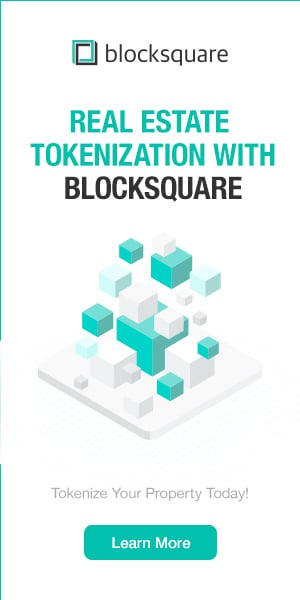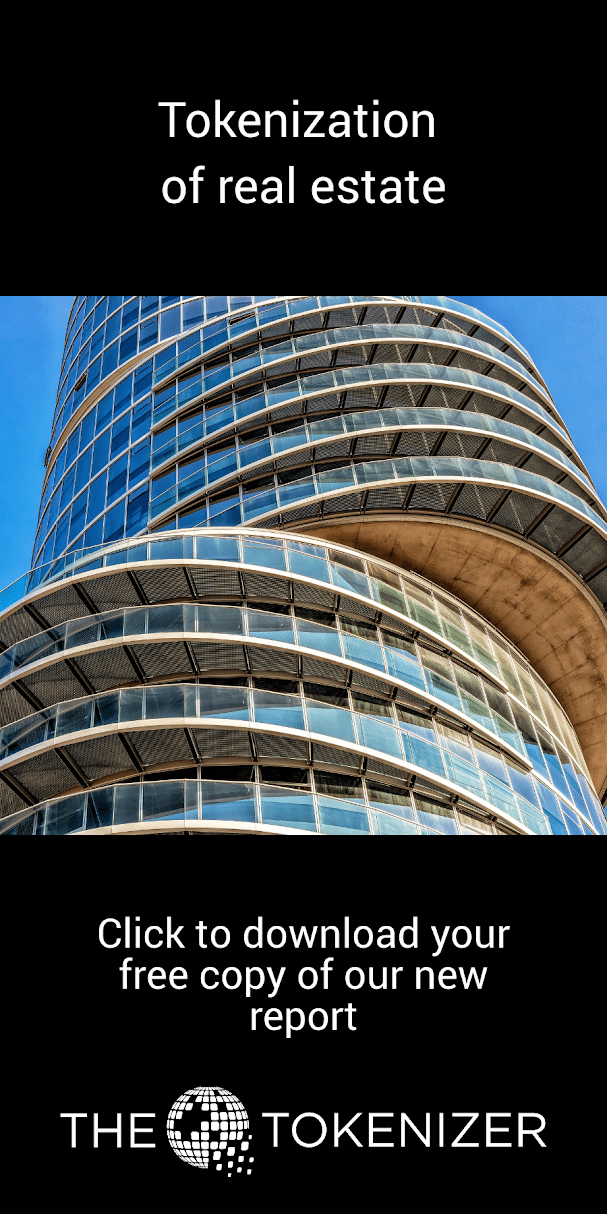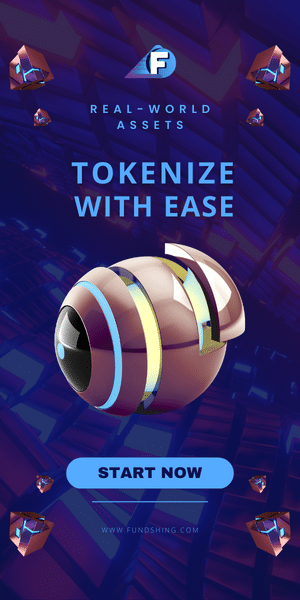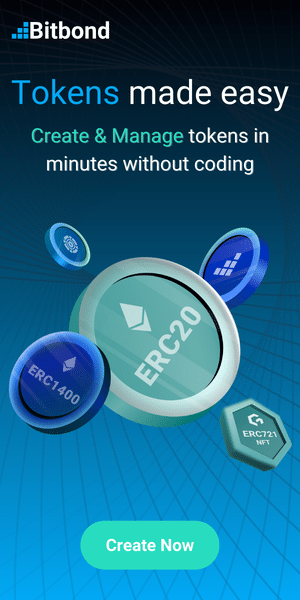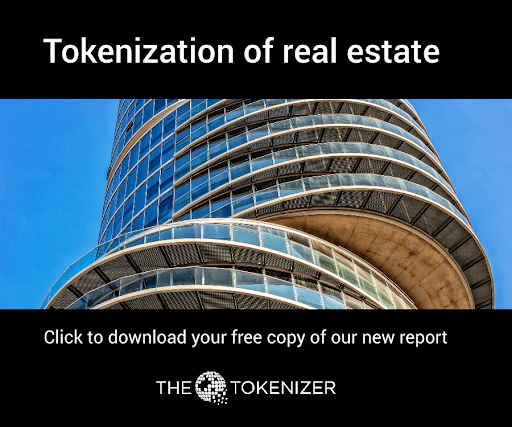DeFi and tokenization together reshape the financial system
By Nicolas Weber is Head of Business Development at Amazing Blocks
DeFi, short for decentralized finance, is without a doubt one of the hottest topics these days in the blockchain space. Dozens of projects compete in various segments, including lending, derivatives, payment solutions, decentralized trading and insurance. The volume of money locked in DeFi grew from below 1 billion dollars at the end of 2019 to more than 40 billion dollars at the time of writing (February 2021). However, this figure still suggests an early stage when drawing comparisons to the ICO craze of 2017. While promising skyrocketing returns and inclusion for everyone, the biggest hurdles thus far are accessibility and the KYC-less structure, especially for the traditional finance branch and a lack of liquidity since real-world assets are rarely integrated. Tokenized equity and assets can cope with this by bridging the gap and hence providing liquidity. Now the real world can efficiently be integrated into DeFi through a legal wrapper in the form of ERC20 tokens in line with the Liechtenstein Token Act. Nevertheless, one first needs to understand what DeFi is, analyze its potential challenges and generally foster education about this topic. This article will provide some insights and present a solution for the combination of tokenization and DeFi – potentially the two most significant “Killer Apps” of blockchain.
Tokenized assets and entities transform DeFi into a real-world application
“If Bitcoin proved that a global digital store of value is possible, then this year Ethereum proved that an entire decentralized financial ecosystem (DeFi) is inevitable.” With these words, Consensys’ Q4 2020 DeFi report on the DeFi ecosystem based on Ethereum begins. The summer of 2020, aside from a global pandemonium, was all about DeFi hype. At least in the still comparably manageable blockchain scene.
DeFi has clearly exceeded many observers and analysts’ expectations and can point to growth figures of staggering proportions. But even after a short breather in Q4 2020, the last few weeks have once again shown that this development is only just beginning. The total value of US-Dollars locked up in DeFi Protocols is shown in Figure 1.
Figure 1: Total Value Locked in Defi (USD), (source: defipulse.com)
In the crypto scene, well-known phrases such as: “We are still early” are especially true for the DeFi sector. If one compares the figures of the traditional financial world, one comes to the conclusion, even with conservative projections, that DeFi can still become much larger. However, terms such as decentralized lending, staking, flash loans and yield farming can confuse the reader quite quickly.. A whole world of its own has developed here that requires at least some reading of relevant crypto magazines in order to understand it. This article aims not to make the reader a proven DeFi specialist but rather to attempt to explain the benefits of a decentralized financial world and examine how DeFi and tokenization can be combined.
Last year Metamask announced that its crypto wallet would enable token swaps directly within its browser extension. Hence, Metamask will get a foot in the DEX aggregation business door, sourcing liquidity across all decentralized exchanges and aggregators. This and many more headline news prove that DeFi is a force to be reckoned with in the future. By integrating tokenized assets and equity into DeFi protocols, the functions of, for instance, existing liquidity pools and interest rate based protocols can be effectively applied to real-world assets. Thus, mainstream adoption for DeFi is fostered. But with tokenization, even features such as atomic swaps or flash loans become possible for real-world assets. This will substantially rejuvenate the current illiquidity in the DeFi sector and also enable a far more diverse range of opportunities for investing from the perspective of CeFi (centralized finance). Tokenization efficiently bridges the gap between these two worlds.
Semi-automated lending and trading systems atop blockchain networks are the future of finance. Here, cutting out intermediaries while democratizing access through blockchain-based governance models make room for new solutions. In theory, anyone with a connection to the internet can leverage DeFi protocols. Individuals worldwide can now conduct financial transactions more efficiently and at lower costs, especially when compared to the global remittances market. Currently, this still requires users to own crypto-assets. In the near future, anyone will have access to blockchain-based financial systems once FIAT-pegged stablecoins become a legitimate source for exchanging money in and out between both worlds, classic financial legacy (off-chain) and blockchain-based systems (on-chain). Especially in emerging markets such as Asia or Africa, DeFi could have a tremendous impact. Some economies of developing countries might leapfrog old innovations in Europe, such as the current banking system.
Owning real-world assets and equity will not grant you access to DeFi. But when tokenized with full legal compliance, these assets can, in fact, effectively be integrated. With the assistance of service providers such as Amazing Blocks, one has the flexibility to tokenize every asset in line with the Liechtenstein Token Act and therefore, even illiquid assets could be locked in DeFi protocols. This will provide much-needed liquidity for DeFi as the finance sector as a whole is worth more than 26 trillion dollars. Now even people not familiar with crypto have the chance to take part since ERC-20 tokens generated through the Tokenpad can be seamlessly integrated. The respective Token Container Model in Liechtenstein guarantees that each token is a digital representation of the real-world assets.
One interesting use case, for instance, is collateral. Collateralizing is a major feature in some of the most established protocols like Aave, Compound or MakerDAO and quite relevant in the traditional world of finance as well. Here, you have to contact an institution such as a bank which will require certain collateral such as real estate. In comparison to DeFi lending pools, banks are constrained by a high burden of regulation, limited lending offerings and low-interest rates. Conversely, in DeFi protocols, the rules are consistently decided by the community and no middleman is needed for taking a loan. Also, the overall process is far more dynamic as fragments of the respective assets (e.g. real estate) are tradable 24/7. Guaranteed fungibility will follow. This will unlock trillions of dollars and provide liquidity and a crucial use case to merge these two worlds. Now the credit market, infamously responsible for the 2008 crash through subprime loans, will be transparently guided through code and community.
Another way for tokenized assets to enable real-world use cases is by utilizing DEXs (decentralized exchanges) and swapping protocols like Uniswap. While the daily trading volumes here are flourishing, many trades stem from speculation on newly founded projects and future gains. However, this will fade away gradually and liquidity paired with real-world use cases – not solely a GitHub code at times – will be required to achieve sustainable growth. Additionally, the lack of KYC and AML is a significant pain point, especially for regulators. By enabling KYC and AML procedures for tokenized equity, assets, and entities in DeFi protocols, this pain point for regulators can be jettisoned in the future. On the one hand, liquidity for DEXs and swaps is provided by giving the traditional finance sector access to this market. On the other hand, regulatory aspects are taken care of by leveraging the services of companies like Amazing Blocks and hence the legal compliance with the disruptive Liechtenstein Token Act. Liechtenstein, as a member of the European Economic Area (EEA), also grants EU-passporting.
Locking crypto tokens in DeFi protocols has recently become a major trend, as depicted in figure 2 below. Consequently, the market is maturing in this aspect and setting the stage for tokenized assets to follow suit. Players in this space already leveraging this model with, for instance, BTC will be able to help onboarding new actors, including tokenization.
Figure 2: BTC locked in DeFi protocols (source: Techfans UK).
Addressing the secondary market is a substantial issue of tokenization. DeFi and, generally, the crypto market could be the solution. But what they do not provide are tangible assets with guaranteed future growth and real-world utility. Most DeFi tokens like that of the innovative YearnFinance are meant to govern complex protocols but need real-world accessibility. Additionally, tokens have a limited supply, where issues of falling token prices through inflationary measures can harm prosperity in the future. The issue here is that time and time again, the foundation has only released a small portion of the total supply and will gradually release the remaining tokens. As a result, significantly falling prices can occur, scaring large portions of the ecosystem away. This is due to the fact that these tokens are often considered an investment solely but not used for actual governing. A great example here is MakerDAO’s recent “Black Thursday Vote”. Here only 8,74% of holders participated in deciding on compensation for holders affected by the hack. By locking tokenized real-world assets within these protocols, however, far more people will be long term users of these ecosystems.
Main benefits of DeFi
In DeFi systems, no KYC and paperwork is required. Hence bureaucracy – continuously slowing down innovation – can be reduced and automated using the unique benefits of blockchain technology and with the help of smart contracts. Now, anybody with an internet connection can access financial services. Decentralized finance empowers users to remain in full control over their own assets using non-custodial wallets. One crucial benefit here is that access for the unbanked population to financial products is granted.
Due to the permissionless property of blockchains such as Ethereum, their respective interoperability and most importantly, the composability of decentralized applications (dApps) thanks to token standards such as ERC-20, DeFi protocols can rapidly evolve and adapt. Therefore, they are far more dynamic when evolving than the traditional world of finance. New features and updates can be seamlessly integrated without having to overhaul existing systems completely. Moreover, this brings the opportunity to reduce intermediaries to a minimum. This will enable investors to save on fees for financial services significantly. Furthermore, monetary means are provided by other users acting as counterparts for lending and borrowing. In the DeFi space, they are called liquidity providers (LPs) or lending pool operators and have been the backbone of the current DeFi boom. The decentralized structure enables inclusion and fairness for all participants. Furthermore, the DeFi market outperformed, for instance, BTC during the last rally but remained highly speculative and volatile since not many actual use cases have been enabled for the respective crypto-assets.
What is the future of yields in DeFi?
As DeFi enthusiasts know, the currently offered yields are quite jaw-dropping and highly volatile compared to the traditional sector. Yield farming or also called liquidity mining, is a shorthand for clever strategies where putting crypto temporarily at the disposal of a protocol’s application earns its owner more cryptocurrency. Yield fluctuations can be an issue but also a blessing, as you have the flexibility to deliberately switch pools using arbitrage. The result is much more diversification enabled for investors paired with significantly higher returns. However, a pain point is the idea that stimulating the usage of the platform increases the value of the token.
Thereby initially creating a positive usage loop to attract users. Consequently, governance tokens are increasing in value right now, but the risk of decrease over time when the market matures prevails. Nevertheless, especially when tokenized assets and equity are included, the overall growth rate will most likely exceed inflation by far and thus, positive returns follow.
Innovation in DeFi – needed and addressed
As DeFi is quite young, a lack of liquidity compared to traditional finance needs to be addressed in order to enable sustainable growth. Further, more education is crucial here and has to be enhanced. Otherwise, it will always remain a niche. Just recently, YearnFinance founder Andre Cronje released a protocol for testing purposes. However, speculators invested money without actually understanding the concept. Within a few hours, the money was lost when the protocol broke down. Furthermore, a lot of protocols are not translated into multiple languages, making them hard to access. A certain degree of blockchain knowledge is always needed when utilizing DeFi – a feature most people simply do not possess. It will be important to see whether or not people will be educated on how to use and also on security and risks or only one of these aspects. To guarantee future mainstream adoption, all of them need to be addressed.
Another issue to cope with is scaling solutions. They are crucial for future growth and require substantial upgrades for including tokenized assets – an aspiring trillion-dollar industry that can take part in DeFi. One solution for this is the highly anticipated ETH 2.0. It will have a substantial impact on scaling, but the completion here is still years away. Ethereum’s update will also deal with the issue of high gas fees currently slowing down growth. The latest move to enable transfers of liquidity from Ethereum highlights a general interoperability trend seen in many non-Ethereum DeFi projects. Some investors and commentators believe that these projects’ success hinges on bridging Ether (ETH) liquidity and offering a cheaper alternative to allow for further DeFi growth. The best solutions for this are considered to be sharding, rollup-model and generally sidechain-related innovations.
Governance tokens – crucial role and auspicious future?
Governance tokens enable users to vote on the future of decentralized protocols, but they also present new ways for DeFi founders to entice assets onto their platforms. They are basically certificates to serve in an ever-changing legislature in that they give holders the right to vote on changes to a protocol. Hence users actually dictate the ecosystem’s direction, not central institutions. Additionally, governing parameters are adjusted weekly like for instance, with MakerDAO: A vote is held almost every week on small changes to parameters that decide how much it costs to borrow (interest rate) and how much savers earn. Up to a certain degree, these tokens can actually be compared to securities. Even SEC commissioner Peirce was speaking about this topic. Peirce mentioned that even though the tokens carry some equity-like benefits, multiple questions regarding the regulatory structure and how these tokens could affect corporate governance continue to linger. Still, the future is bright for these tokens if DeFi growth accelerates and real-world applications through tokenization gains steam.
Staking – a competition to DeFi?
Staking is considered one of the safest ways to earn crypto and enables earning a passive income. It is a relatively simple way to start participating in blockchain by merging tech and finance perfectly. Staking refers to validating transactions while earning interest on tokens provided for the validation process. It is a less resource-intensive alternative to mining and involves holding funds in a cryptocurrency wallet to support a blockchain network’s security and operations. Staking is used in Proof of Stake (PoS) networks – a consensus mechanism that allows blockchains to operate more energy-efficiently while maintaining a decent degree of decentralization. It is a realistic alternative to mining and the respective Proof of Work (PoW) system prevalent in, for instance, Bitcoin. Instead of competing for the next block with computational work, PoS validators are selected based on the number of tokens they are staking. The “stake” incentivizes validators to maintain network security. Unlike mining, there is no need for expensive and environmentally harmful mining equipment (hardware). One major benefit of staking is the sustainable Return of Investment infrastructure in place for the future, as displayed in figure 3 below.
Figure 3: Staking ROI (source: Itonetwork Blog)
Both DeFi and staking are necessary for the growth of the blockchain industry. Ethereum – the cohort of most DeFi protocols is currently in the process of switching from PoW to PoS. Hence both will dually exist and grow as even some of the best DeFi projects rely on staking, which offers a compound interest. Staking contributes to the supply of new tokens from a blockchain network. DeFi projects contribute by accelerating circulation and promoting new use cases across many platforms. To sum up, briefly, both are essential for the future of blockchain and, in fact, complement each other rather than competing.
DeFi, the real economy and regulation
While KYC is not necessarily the most pressing issue of the secondary market, it still inherits an important role. If legally compliant tokenized assets are to be integrated, regulators and DeFi protocols need to adapt to merge blockchain with the real economy. In terms of DeFi affecting the real economy, the most immediate use case for tokenized assets is collateral on DeFi protocols. The traditional world of finance and DeFi will coexist and serve different needs and client bases. However, in the future, DeFi will be far more interoperable with CeFi when regulators allow tokenized assets to take part. Innovations like credit delegation can provide liquidity to all of finance.
The disruptive Liechtenstein Token Act shows that future-oriented regulators like in Liechtenstein aim to cope with providing the best conditions for the age of Web 3.0. Tokenization of legal entities (company shares and other assets) can be subsequently applied to traditional assets and equity as well, not just crypto-assets. Issued units of ownership of real-world assets through tokenization can then be applied to DeFi due to the ERC-20 tokens that clients of Amazing Blocks can generate. Hence tokenization functions as the bridge between the traditional world of finance and the blockchain sector. A question critical DeFi market observers continually pose is the following: Can DeFi remain KYC-less forever? Illicit money can circulate through the open door policy of DeFi protocols without AML and KYC measures. Also, flaws in code can be very damaging and not reversed. Tokenization with compliant KYC and AML processes in line with the Liechtenstein Token Act can be the solution here – as the regulators enable a smooth yet detailed control. The Tokenpad software of Amazing Blocks with respective features can be the embodiment of this.
Conclusion
DeFi will affect the real economy and lead to a significant wealth transfer from CeFi to DeFi. This will not happen solely with contemporary solutions. Real-world synergies are simply missing, and it will be impossible to foster mainstream adoption without them. The tool bringing these two worlds together will be tokenization of equity and any kind of asset (e.g. real estate, machines, patents, classic cars). Through tokenization, any real-world asset receives a legally compliant digital representation in the form of tokens. These tokens can subsequently take part in DeFi. When DeFi and tokenization are combined, the unique DeFi features and perks of tokenization will together disrupt the financial system. Core benefits here are inclusion, increased liquidity, compliant digitized assets, and innovative financial tools. Regulators all across the globe will look to Liechtenstein for guidance in terms of adapting their laws to join the journey of disruption. At Amazing Blocks, we are eagerly looking forward to maintaining our pioneer status and being at the forefront of integrating tokenized assets and equity to DeFi protocols. Disrupting the financial system is an ongoing process that requires time – to save time and money in the future.
Author
Nicolas Weber is Head of Business Development at Amazing Blocks and is your direct contact for any regards. You can contact him via email or connect with him on LinkedIn.
References
von Wachter, V., Sandner, P. (2019, Dezember 9). DeFi – What you need to know.
Retrieved from:
Sandner, P., Nägele, T., Gross, J. (2019, October 7). Liechtenstein Blockchain Act: How can nearly any right and therefore any asset be tokenized based on the Token Container Model?. Retrieved from:
Dünser, Dr. Thomas: The Liechtenstein Blockchain-Act (2019, March 3), Government Principality of Liechtenstein
Carson, B.; Romanelli, G.; Zhumaev, A.; Walsh, P. Blockchain beyond the hype: What is the strategic business value? McKinsey & Company.
“Bericht und Antrag der Regierung an den Landtag des Fürstentums Liechtenstein”, Nr 54
2019, Betreffend: Die Schaffung eines Gesetzes über Token und VT-Dienstleister und die Abänderung weiterer Gesetze
“The Era of Tokenization” (2018). Report by Finoa
Cryptoasset Market Coverage Initiation Valuation (August 2018). The Satis Group Report.
“The tokenization of assets is disrupting the financial industry. Are you ready?” (2019). Deloitte









